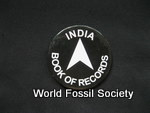Even for the lucky few creatures that are preserved in the fossil record, soft tissues such as skin and feathers typically disappear over time. But a newly developed technique has found a way to bring them back to life in some cases. Researchers have now used the approach to resurrect the teeth and recognize the […]
Posts Tagged ‘Russel T Sajeev’
Internal Bone Structure Reveals Loading and Walking Behavior
 February 3rd, 2013
February 3rd, 2013  Riffin
Riffin The form and structure of bones change as a result of the forces to which they are subjected. Researcher Patrik Christen of Eindhoven University of Technology (TU/e) has used this fact to determine the load using the bone structure. This knowledge can be important in predicting the progress and treatment of bone diseases, as well […]
First Artificial Enzyme Created by Evolution in a Test Tube
 February 1st, 2013
February 1st, 2013  Riffin
Riffin There’s a wobbly new biochemical structure in Burckhard Seelig’s lab at the University of Minnesota that may resemble what enzymes looked like billions of years ago, when life on earth began to evolve — long before they became ingredients for new and improved products, from detergents to foods and fuels. Seelig created the fledgling enzyme […]
Ups and Downs of Biodiversity After Mass Extinction
 January 31st, 2013
January 31st, 2013  Riffin
Riffin The climate after the largest mass extinction so far 252 million years ago was cool, later very warm and then cool again. Thanks to the cooler temperatures, the diversity of marine fauna ballooned, as paleontologists from the University of Zurich have reconstructed. The warmer climate, coupled with a high CO2 level in the atmosphere, initially […]
Poisonous prehistoric ‘raptor’ discovered by research team from Kansas and China
 January 30th, 2013
January 30th, 2013  Riffin
Riffin A group of University of Kansas researchers working with Chinese colleagues have discovered a venomous, birdlike raptor that thrived some 128 million years ago in China. This is the first report of venom in the lineage that leads to modern birds. “This thing is a venomous bird for all intents and purposes,” said Larry Martin, […]
Prehistoric Ghosts Revealing New Details: Synchrotron Helps Identify Previously Unseen Anatomy Preserved in Fossils
 January 27th, 2013
January 27th, 2013  Riffin
Riffin Scientists at The University of Manchester have used synchrotron-based imaging techniques to identify previously unseen anatomy preserved in fossils. Their work on a 50-million-year-old lizard skin identified the presence of teeth (invisible to visible light), demonstrating for the first time that this fossil animal was more than just a skin moult. This was only possible […]
New Dinosaur Fossil Challenges Bird Flight Origins Theories
 January 26th, 2013
January 26th, 2013  Riffin
Riffin The discovery of a new bird-like dinosaur from the Jurassic period challenges widely accepted theories on the origin of flight. Co-authored by Dr Gareth Dyke, Senior Lecturer in Vertebrate Palaeontology at the University of Southampton, the paper describes a new feathered dinosaur about 30 cm in length which pre-dates bird-like dinosaurs that birds were long […]
Sex of Early Birds Suggests Dinosaur Reproductive Style
 January 23rd, 2013
January 23rd, 2013  Riffin
Riffin In a paper published in Nature Communications on January 22, 2013, a team of paleontologists including Dr. Luis Chiappe, Director of the Natural History Museum of Los Angeles County’s (NHM) Dinosaur Institute, has discovered a way to determine the sex of a prehistoric bird species. Reconstruction of Confuciusornis sanctus. (Credit: Stephanie Abramowicz, NHM Dinosaur Institute) […]
How dinosaurs measure up with laser imaging
 January 22nd, 2013
January 22nd, 2013  Riffin
Riffin Karl Bates and his colleagues in the palaeontology and biomechanics research group have reconstructed the bodies of five dinosaurs, two T. rex (Stan at the Manchester Museum and the Museum of the Rockies cast MOR555), an Acrocanthosaurus atokensis, a Strutiomimum sedens and an Edmontosaurus annectens. The team, whose findings are published in the Public Library […]
Mars May Have Supported Life: Martian Underground Could Contain Clues to Life’s Origins
 January 21st, 2013
January 21st, 2013  Riffin
Riffin Minerals found in the subsurface of Mars, a zone of more than three miles below ground, make for the strongest evidence yet that the red planet may have supported life, according to research “Groundwater activity on Mars and implications for a deep biosphere,” published in Nature Geoscience on January 20, 2013. Up to half of […]



 Posted in
Posted in  Tags:
Tags: 
